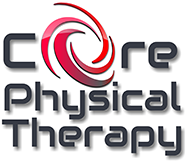Chicago’s Top Rated Local® Physical Therapy
Physical Therapy: 5 Things about Core Stability
Core stability has been an increasingly important component of many people’s exercise regimen and in physical therapy. Fitness and Medical professional concerned with human movement have been talking about a stable core for years. The problem is that it is a poorly defined area of fitness. What exercises are the best for to achieve a stable core? Does core stability prevent injury? How do we measure progress? With my work as a physical therapist treating spinal conditions, these are the observations that I have gathered that have lead to positive outcomes from physical therapy rehabilitation plans:
1) The ability to maintain a stable core is contextual to the activity. In order to reap the benefit of stability training from physical therapy, the intensity and duration of the exercise has to match what you want to do. Many patients with back pain talk at length about the countless amount of planks and abdominal holding exercises they do. This would seem to be the correct path to a stable core, right? Thirty second planks in the prone position are great for working statically at a high intensity. But if the patient is having difficultly getting up off a chair, standing, or walking a half mile without back pain, planks really aren’t going to help a moving system at lower intensity. Essentially training those muscles to work at high intensity/shorter duration teach them to work just like that. This will not transfer to functional stability with lower load, longer duration activities they are having trouble completing. It is comparable to training for a marathon but only doing sprints. All the muscles you need to complete the marathon are being used, but they are not being trained to work over a duration. To achieve better daily stability, complete some unrelated upper body exercises, like bicep curls, while standing on a Bosu. Physical Therapy will teach those core muscles to hold during low load, long duration for better endurance.
2) Stability relates strongly to balance. Being ‘stable’ means that a structure resists changes in position due to external forces or deterioration. If you watch a personal with good balance, you would see very small corrections in order to stay upright. This is quite the opposite with patients with bad balance. There are much larger corrections, violent swings from side to side. Balance is the ability to detect change in position and being able to correct the situation effectively and efficiently. Becoming more stable requires the patient to train to be more sensitive to changes and produce a response that mitigates the change.
3) Understanding internal stability vs. muscular stability. What are you relying on to stay upright? As a physical therapist, I notice that many people with spinal problems rely too much on internal stability mechanisms. While sitting in a chair, go into a full slouch position by turning off all the muscles. You are now using only internal stability tissue to hold you up against gravity. These are ligaments, intervertebral discs, cartilage between joints that are being loaded to maintain an upright position. These are also tissues that have a poorer ability to heal back to their original tissue quality. These specialized tissues are the guardrails that are the last stop before complete stability failure of a structure. (Just like the guard rails on a highway… they are the last ditch effort to keep your car where its supposed to be!) Muscular stability is being able to maintain a joints control within the confines of those guard rails. (Just like being able to effectively control your car and keep it on the road.) By training the person to use and recruit muscles we are loading systems that are adaptable and are made for loading. Anyone that has worked out and been sore understands this: you place force through muscles, you get soreness, but then you heal in 24-36 hours (delay onset muscle soreness) and then move on about your way. Muscles have a phenomenal capacity to regenerate. We want to use and load these tissue to prevent injury. This is a hot topic in regards to prolonged sitting, which I will cover in another blog post.
4) Bad biomechanics are a stability killer. The most common finding I see with patients with back pain is hip flexor muscle tightness. When walking, if your hip cannot extend, your body will find that ability elsewhere, and it typically happens by extending the back. (Next time you are out walking around, watch people’s hip excursion from behind when they walk. People with larger lateral motion are typically more at risk for problems because they are hitting their “guardrails”.) This causes the joints of lumbar spine to smack into one another and breakdown. Even with prolonged core stability training, these external forces on the system will cause you to work harder than necessary and unbalance the system. This is where a skilled physical therapy can help sort out you mechanics to ensure you are working and training with optimal mechanics.
5) SLOW IT DOWN! Core stability is mostly about control. I often have my patients slow their exercises down by a factor of 3. Slowing down builds awareness of body position and makes the muscles work through the full range range of motion. Explosive contractions build momentum, which will then turn the muscle recruitment down, leaving less control and higher risk of hitting a guard rail. This will also help the muscle build more endurance for prolonged activities. Physical therapy is about building a stable foundation for the patient to go out and strengthen independently!

